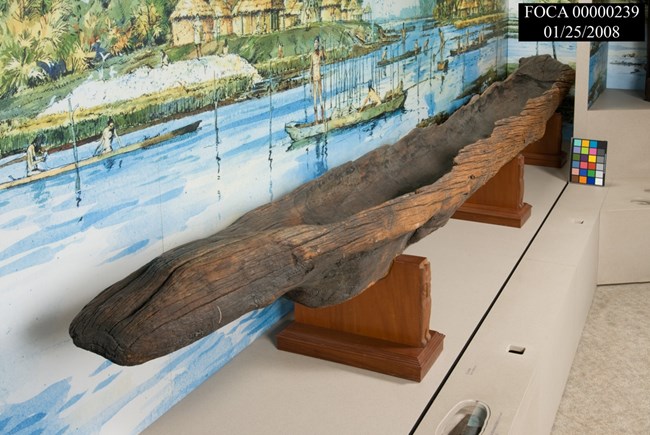
NPS Photo FoodThe Timucua grew much of their own food and stayed in relatively the same places from year to year. Important crops to Timucua farmers were pumpkins, cucumbers, peas, gourds, maize, and beans, as well as other fruits and starches. The Timucua primarily gathered hickory nuts, berries, and acorns, which grew plentifully on vines and trees. The French account of Timucua food is somewhat incomplete, as the French did not recognize some of the different foods that the Timucua grew and gathered. Every year during the growing season, the Timucua would only grow enough food for about six months of the year. 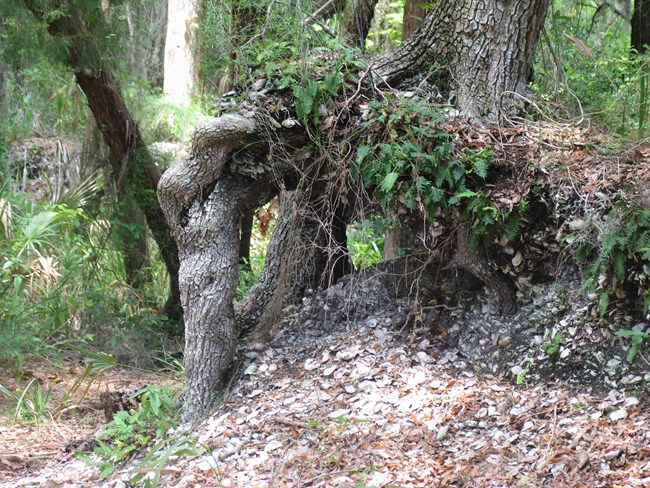
NPS Photo In addition to agriculture, the Timucua fished and hunted, as well as gathered things like Spanish moss from the nature around them. Fish and seafood, as their primary source of protein, were incredibly important to the Timucua diet. The Timucua were skilled at building canoes to catch fish. Fat from fish was used as an oil in sauces or as a kind of butter. Oysters were easy to catch and simple to cook. Oyster shells and other kinds of food trash were stacked generation after generation in the same mounds. These mounds (called shell midden) are still visible today in many places and offer archaeologists important information about the diet of the Timucua. The Timucua also hunted large game animals like deer and alligators. Hunting was often a dangerous task, although the animal yielded a lot of meat and pelts were highly valued. Animal bones were used as weapons or other types of tools. During the winter, the Timucua left their villages to go live further into the woods. Here their diet consisted of the nearby game and edible plants from around them. Certain groups of Timucua might have been hunter gatherers. A Spanish settler described how a specific group of the Timucua lived largely on fish and roots, although the accuracy of his account is unknown. When European settlers arrived, they brought European fruits and vegetables with them. Archaeological evidence shows that the Timucua eventually adopted many of these foods, such as wheat, sugarcane, garlic, figs, melons, and sweet potatoes. 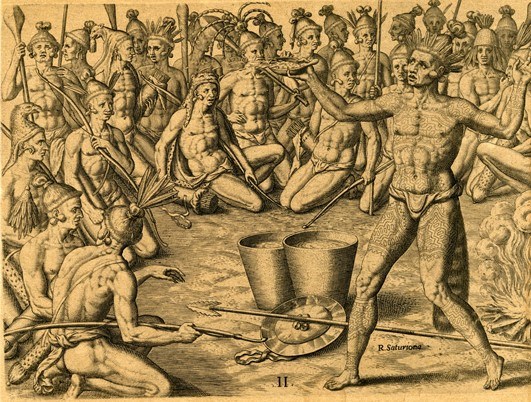
Theodore de Bry ReligionWe don’t know very much about the religion of the Timucua, since the Timucua kept many of their beliefs secret from the Europeans. Additionally, French and Spanish settlers often destroyed evidence of the Timucua religion because they wanted to convert them to Christianity. What we do know is that the Timucua worshipped the sun and the moon, the chief held the most religious power, and that certain Timucua had more religious power than others. These Timucua were called shamans. Shamans could predict the future, curse people, control the weather, perform blessings, and cure people. Many shamans were doctors or herbalists, and would use the plants around them to help people with illnesses. Even though today we would not consider medicine religious, their beliefs about medicine and their beliefs about their gods could not be separated. Shamans were involved in almost every part of life, from planting crops to helping women give birth. They performed blessings over simple tasks like choosing a new place to fish or turning maize into flour. Shamans were important on hunts, especially since hunts could be dangerous. During hunts, the shaman said several prayers to make sure that they did not do anything that would hurt the village. Something as simple as a Timucua man eating the meat of a deer he shot could mean that the man would never shoot another deer again. 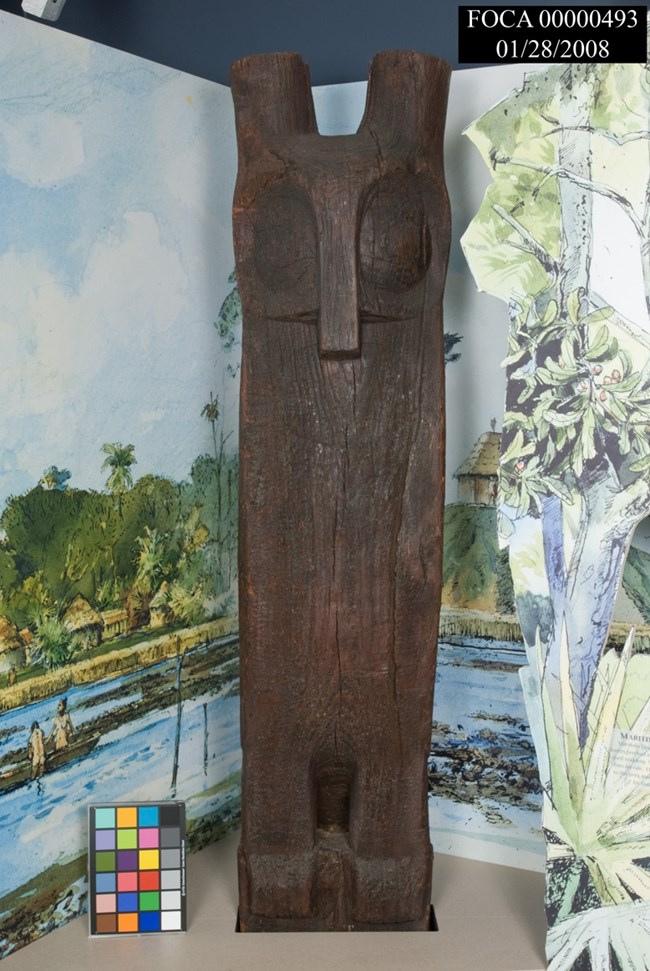
NPS Photo The OwlThe Timucua believed in omens, which meant they interpreted random events as having a deeper meaning about the future. For example, if someone saw a snake in the woods, something bad would happen. If they heard an owl hoot, that either meant something harmful was coming or that something bad would have happened, but the owl took pity on the person and they were safe. An owl totem found in the St. Johns River proves how important the owl was to the Timucua. The totem likely belonged to a group of Timucua likely called the “people of the owl.” Conversion to CatholicismWith the end of the 1500s, a large amount of Spanish missionaries had established missions near the largest Timucua settlements. The Timucua were taught Spanish, baptized, and evidence of their native religion were destroyed. The missionaries are the primary source of written accounts of the Timucua. They were also a major source of disease for the Timucua. By 1595 the Timucua population had decreased by 75%. 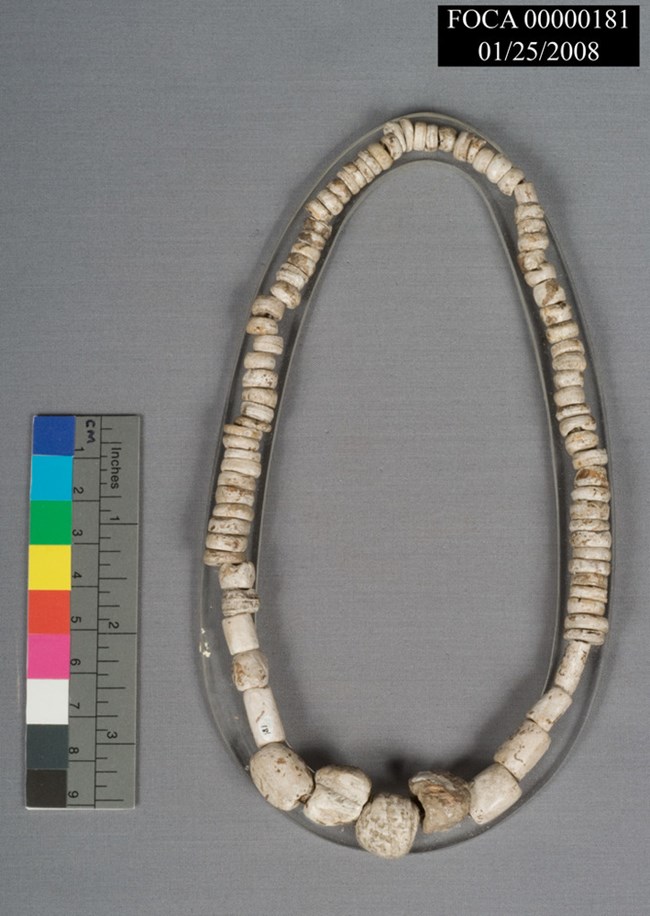
NPS Photo/Darryl Herring ClothingThe French explorer René Laudonniére reported that most Timucua had dark hair and light brown skin from spending a lot of time in the sun. He said that they were taller than the average Frenchman, although the average Frenchman would have been shorter than the average person today. Laudonnière first encountered the Timucua during the summer. The men wore a loincloth that wrapped around their waist, which let them go in and out of the water quickly. The women wore something similar, as well as another covering on their top usually made of deerskin or spanish moss. During the winter, the Timucua added layers to their clothing instead of replacing it. To protect their legs, they wore ‘leggings’, which were the legs of the pants without the seat, something like very long leg warmers. To protect their arms, they wore matchcoats, which were animals skins or feathers worn as a type of shawl, wrapped around the shoulders to keep out wind and rain. Both genders had tattoos, which were a status symbol. The more tattoos a person had, the more status they had. Men also would decorate their faces with a black paint that changed daily. Men and women kept their hair long. When a chief died, they would cut their hair off to show respect to the deceased chief. The Timucua also wore jewelry. Necklaces and bracelets were made from shells and pebbles. Men and women pierced their ears and used fish bladders as earrings. Warriors could decorate themselves with feathers, belts, anklets, and bracelets. They also hung metal plates from their waists as a decorative type of belt. Leaders and their wives dressed differently than everyone else. They would have more intricate clothes with ornate designs painted on them. Many chiefs wore their own distinct face paint designs, and their wives often painted the skin around their mouths blue. An extensively decorated deerskin worn by Chief Saturiwa caught the eye of Laudonniére. Saturiwa eventually gave the Frenchman the deerskin. 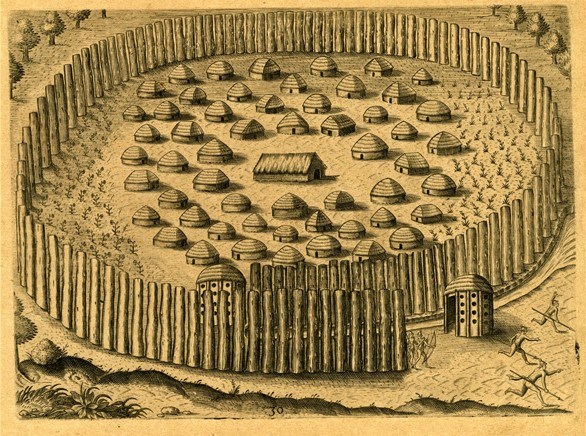
Theodore de Bry Timucua TownsThe Timucua lived in small huts made from palm fronds and compacted mud. The chief had a larger house than the other people in the tribe. Other important buildings in the average Timucua towns were the community house where important community meets were held, the storehouse where food was kept, and the huts where women stayed right after childbirth when they couldn’t come into contact with men. Evidence that the Timucua built religious temples is unclear, but certain groups might have. The engraver Theodor de Bry drew several images of the Timucua towns, although their accuracy is doubted. The image here depicts a fortified town, meaning it has a wall surrounding it, but archaeologists have found no evidence that walls like that have ever existed, and no other written account by Europeans mentions a wall. The Timucua LanguageThe Timucua language was recorded extensively by European missionaries, who needed to know the language so that the Timucua could be converted to Christianity. We still have a detailed record of the language today, which is remarkable since there have not been speakers of the language since the 1800s. Not only do we have an extensive dictionary of Timucua words; we also know Timucua grammar. The deatiled accounts of the language are helpful in understanding the past, but were recorded from a Spanish Catholic worldview. Many other Native American groups, such as the people who predated the Timucua in this area, have lost their languages. Much can be learned from a language. Through studying the Timucua language and comparing it with other languages, historians have been able to trace the Timucua people to a place in the Amazon where ancestors of the groups probably lived over 4,000 years before European contact. Other aspects of culture emerge in the study of language, such as which concepts were spoken of with respect and which complex concepts had words assigned to them. Mother: Isa Father: Ite Tree: Aye Fish: Cuyu River: Ibi Sun: Ela Moon: Acu |
Last updated: July 6, 2023
